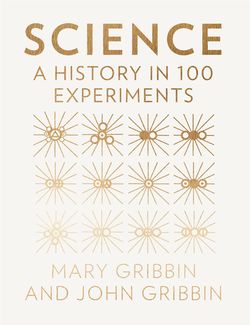Читать книгу Science: A History in 100 Experiments - John Gribbin - Страница 9
Оглавление| No. 4 | DISSECTING THE HUMAN BODY |
The scientific Renaissance began in the middle part of the sixteenth century, and a significant marker is the year 1543, when Copernicus published his famous book De Revolutionibus Orbium Coelestium (On the Revolution of Celestial Bodies), displacing the Earth from its supposed special position in the Universe, and Andreas Vesalius published De Humani Corporis Fabrica (On the Structure of the Human Body), going some way towards displacing humankind from a supposed special position in the animal world. Copernicus’s story is well known, and he did not, strictly speaking, carry out experiments. But Vesalius is less well known, and deserves more attention than he often gets. He did carry out experiments – on human bodies.
Vesalius was born in Brussels in 1514, but carried out his important work at the University of Padua (where he was Professor of Anatomy) in the late 1530s and early 1540s. Before that time, when human dissections were carried out (which was not very often), the actual cutting was done by barber-surgeons, who were little more (arguably less) than butchers. The professor would stand at a safe distance (literally without getting dirty) and lecture to students about what was being uncovered, using imagination as well as actual evidence. Vesalius changed all that. He carried out the dissections himself, showing as well as telling the students what was going on, and developing a much better understanding of the human body. He was helped by the civil authorities in Padua – in particular, the judge Marcantonio Contarini, who not only supplied him with the bodies of executed criminals but would time the executions to fit in with Vesalius’s need for a fresh cadaver for a lecture. This was in marked contrast to his time as a student in Paris, where Vesalius (like his fellow medical students) had been reduced to grave-robbing to get specimens for his studies.
Before Vesalius, the accepted understanding of human anatomy had been handed down since ancient times, and was based on the work of the Romano-Greek physician Claudius Galenus (known as Galen). In the Middle Ages in Europe, it was thought that the ancients had been much wiser than contemporary people, and that they had superior knowledge which could not be emulated, much less exceeded. But this was wrong. Galen was an enthusiastic dissector, but most of his work was carried out on dogs, pigs, and monkeys, because human dissection was infra dig in the second century AD. So his description of the human body was often wildly inaccurate.
© British Library/Science Photo Library
Andreas Vesalius (1514–1564).
The big contribution Vesalius made was not just to improve the understanding of human anatomy, but to stress the importance of using the evidence in front of you and your own experiments to find things out, instead of relying on the supposedly superior wisdom of the ancients. This, of course, echoed what was happening in astronomy at the same time. Vesalius, who once wrote, ‘I am not accustomed to saying anything with certainty after only one or two observations’, used to carry out ‘parallel dissections’ in which an animal body and a human body are dissected side by side, to highlight the anatomical differences between them, explicitly correcting Galen’s errors.
Vesalius also used highly skilled artists to prepare large diagrams to use in his lectures (a sixteenth-century equivalent of PowerPoint), and six of these were published as Tabulae Anatomica Sex (Six Anatomical Pictures) in 1538. He drew three of the illustrations himself, but the other three were made by John Stephen of Kalkar (Jan Stephen van Calcar), a pupil of Titian. Stephen is also thought to have been the main illustrator for Vesalius’s masterwork, the Fabrica, which appeared in seven volumes in 1643. But Vesalius’ pioneering activity did not stop there. The Fabrica was a book for experts – other professors and doctors. In order to make his work accessible to students, and even to educated laymen, he produced alongside it, and published in the same year, a summary officially titled De Humani Corporis Fabrica Librorum Epitome (Abridgement of the Structure of the Human Body) but known as the Epitome. And all before he was 30. He then gave up teaching, and spent the rest of his career practising medicine as a Court Physician, first to the Holy Roman Emperor Charles V and then to Charles’s son, Philip II of Spain (who later sent the Spanish Armada against England).
© British Library/Science Photo Library
Sixteenth-century frontispiece from De Humani Corporis Fabrica, showing a public dissection.
This change of career may have been caused by the opposition to his ideas from some of his peers, even in Padua. Jacobus Sylvius, a physician of the old school based in Paris, said that Vesalius was mad and that any advance of anatomical knowledge beyond Galen was impossible. It was more likely, he said, not that Galen was wrong, but that the human body had changed since his time. In 1543, science still had a long way to go.
